






Search websites, locations, and people

School of Life Sciences ACADEMICS
Researchers at Westlake University Successfully Deciphered the Spatial Structure of the Novel Coronavirus Receptor
25, 2020
Email: fengyi@westlake.edu.cn
Phone: +86-(0)571-85270350
Office of Public Affairs
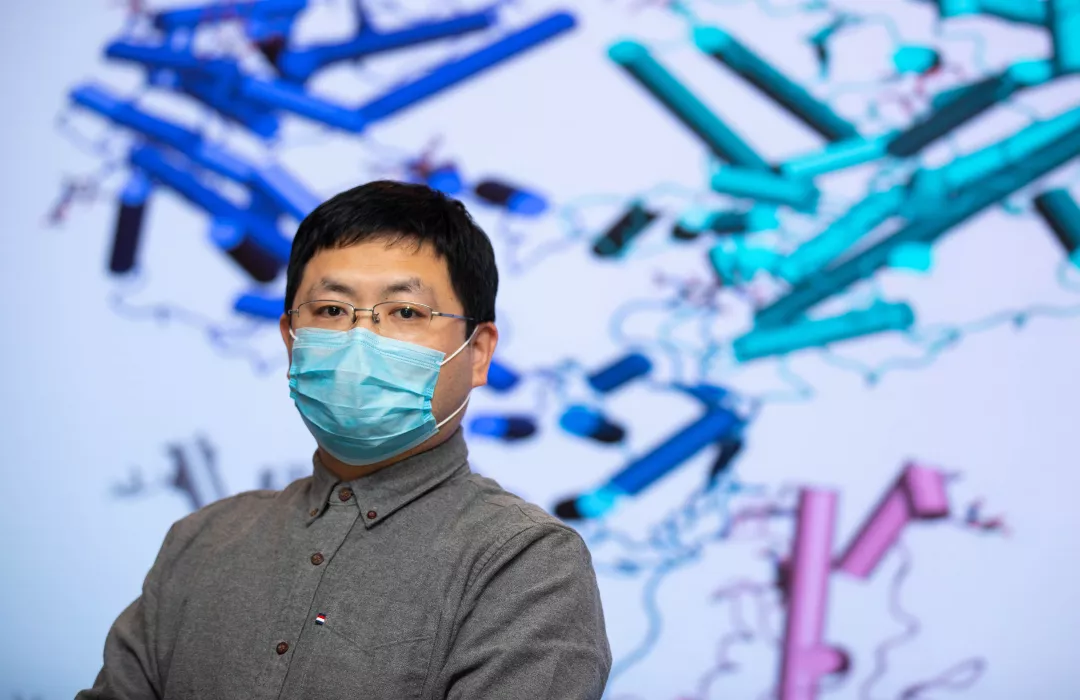
Researchers at Westlake University successfully deciphered the full-length structure of ACE2, the receptor of the novel coronavirus COVID-19, using Cryo-EM. This is the first-ever analysis of ACE2 in full length. The respective research has been released on Feb 19th around 3am on bioRxiv.
After the outbreak of the novel coronavirus, scientists at Wuhan Institute of Virology discovered that COVID-19 infected human cells using the ACE2 protein, same as the SARS virus in 2003. If we think of the human cell as a room, then ACE2 would be serving as the doorknob for a virus such as COVID-19 or SARS to enter the room.
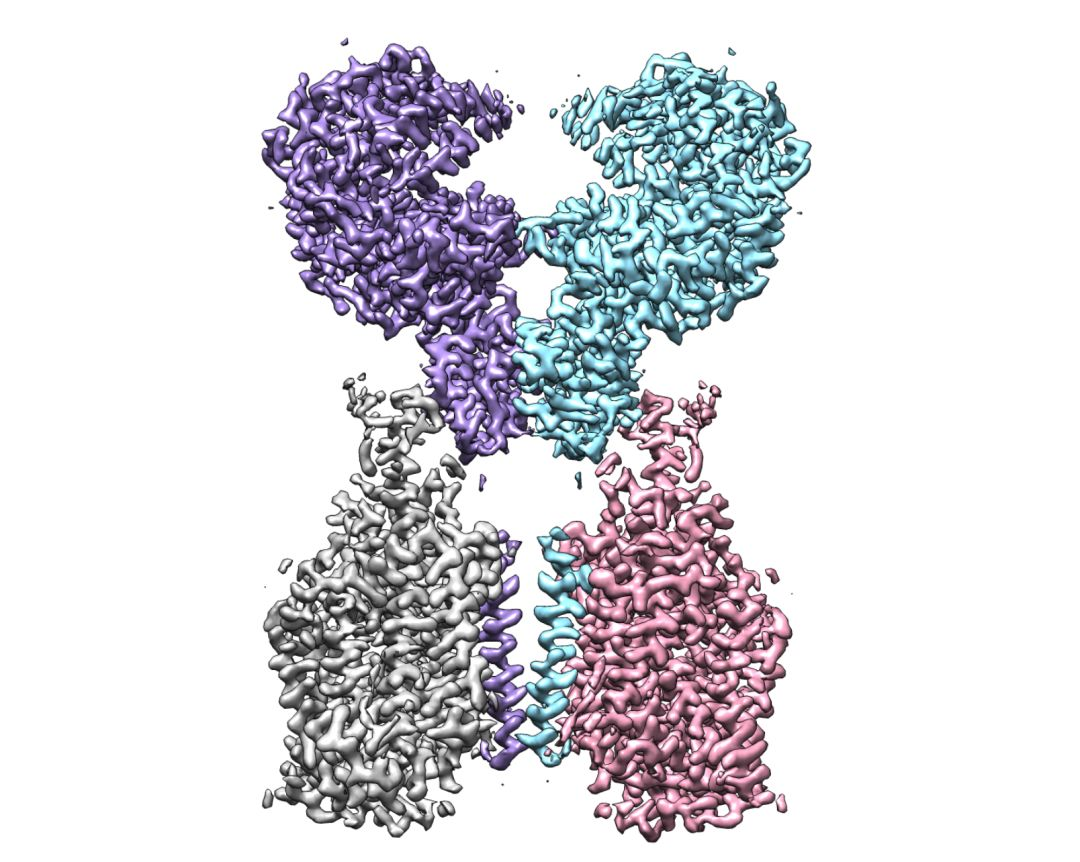
Cryo-EM map of the ACE2-B0AT1 complex.
Research teams from around the world have already published about the 3D-structure of the compound formed by a peptidase domain of ACE2 and the S-protein of SARS-CoV. More recently, a research team at UT Austin released their findings on the structure of the S-protein of COVID-19. However, the states of ACE2 on the cell membrane remained a myth until Zhou’s newly released research. How does COVID-19 bind with ACE2? How does the process differ from that of SARS? Gaining visibility of the full-length protein of ACE2 and the compound of the S-protein will help answer these questions.
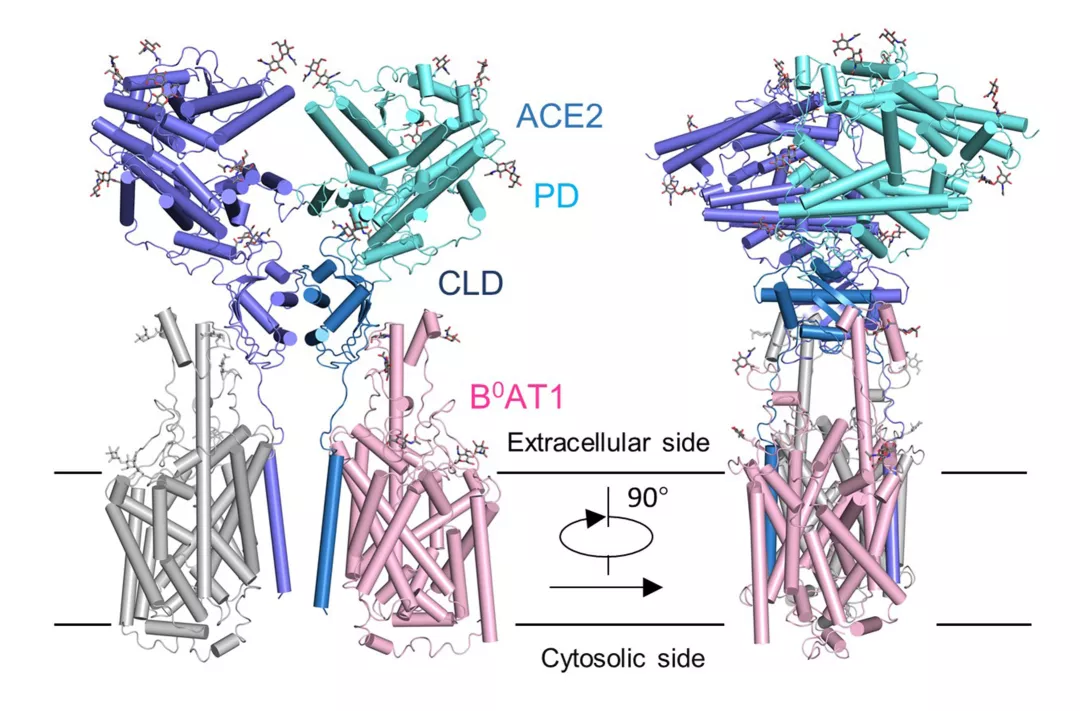
Overall structure of the ACE2-B0AT1 complex.
Qiang Zhou’s lab has been working on this project for months. The first challenge they encountered was to obtain stable samples of ACE2 from the human body. Dr. Zhou and his postdoc Renhong Yan found in academic literature that B0AT1, a neutral amino acid transporter, requires ACE2 for plasma membrane trafficking in human intestines. Based on their experience, this B0AT1 might stabilize ACE2. As it turned out, they managed to gain a stable complex of ACE2 and B0AT1 through co-expression, and managed to decipher its 3D structure with the Cryo-EM at Westlake University at a resolution of 2.9Å. The resolution of the peptidase domain, which is crucial in binding the virus, is 2.7Å.
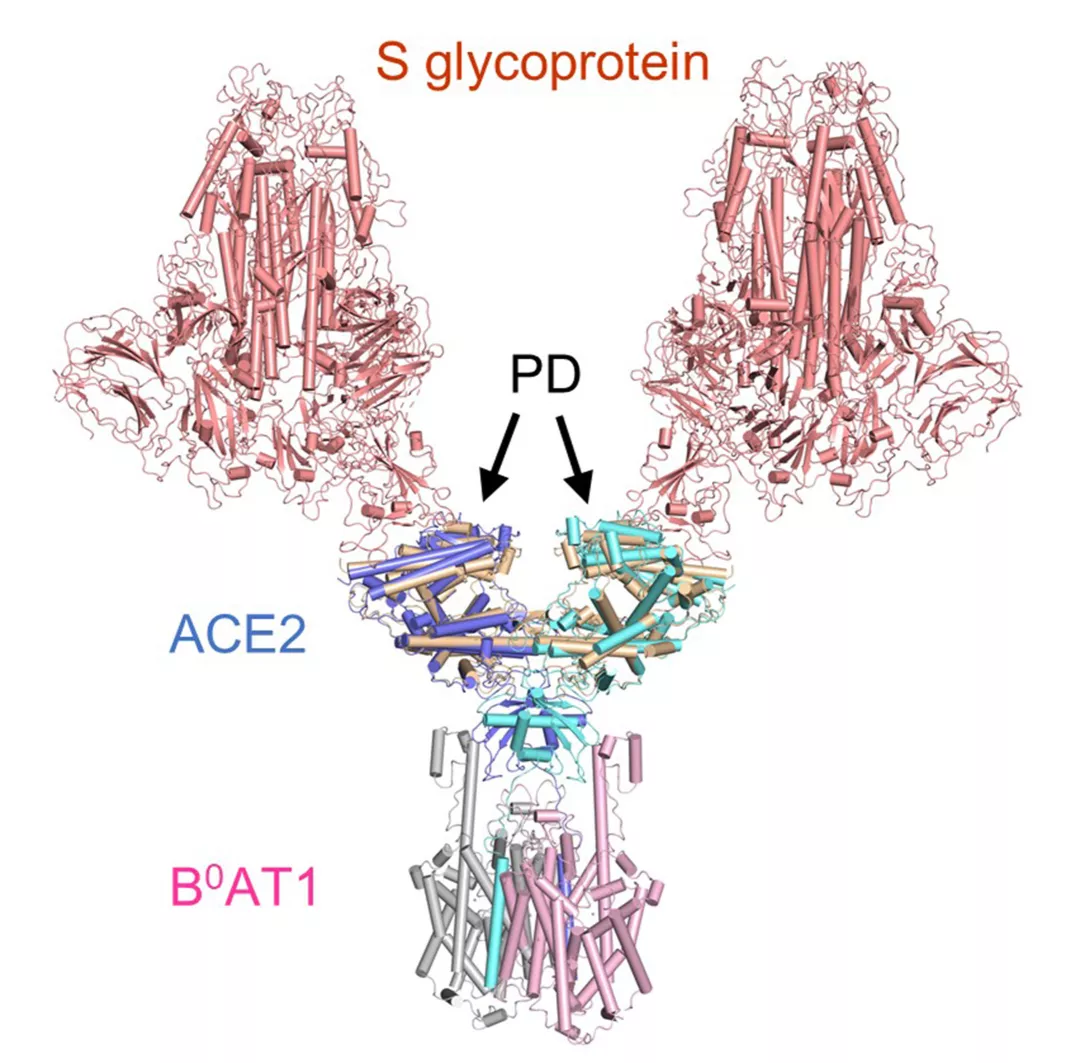
Structure comparison between the ACE2-B0AT1 complex and the complex of the spike glycoprotein (S protein) of SARS-CoV and PD. The structure of the S protein-PD complex (PDB code: 6ACJ) is superimposed to the PD of the closed ACE2-B0AT1 complex.
Through the structural analysis of the full-length protein of ACE2, Qiang Zhou’s lab found that the ACE2-B0AT1 complex, assembled as a dimer of heterodimers, exhibits open and closed conformations due to the shifts of the peptidase domains of ACE2. Both conformations carry the interactive recognition interface of the coronavirus.
These findings provide the foundation for further analysis of the 3D-structure of the compound of full-length ACE2 and the S-protein of COVID-19. It offers interesting insights to how COVID-19 infects cells.
"In short, the analysis of the full-length structure of ACE2 will help us understand the structural basics and functional features of the novel coronavirus entering target cells, and in turn plays an important role in the discovery and in optimizing the inhibitor hindering the entrance into the cell," said Professor Linqi Zhang, the dean of the Global Health and Infectious Diseases Center at Tsinghua University.
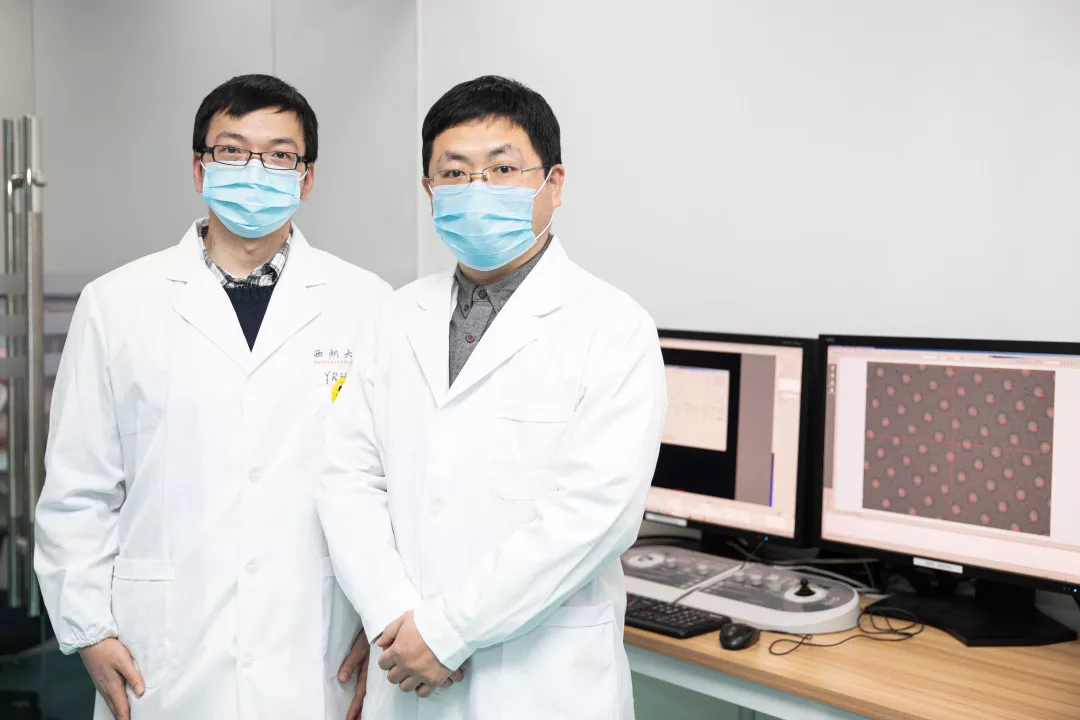
The corresponding author of the paper Qiang Zhou, research fellow at Westlake University, is joined by first author Renhong Yan and authors Yuanyuan Zhang, Yaning Li, and Lu Xia. The research has been done with the support of the Advanced Biomedical Technology Core Facility and the Supercomputer Center of Westlake University.
RELATED
ACADEMICS
Researchers at Westlake University Successfully Deciphered the Spatial Structure of the Novel Coronavirus Receptor


















